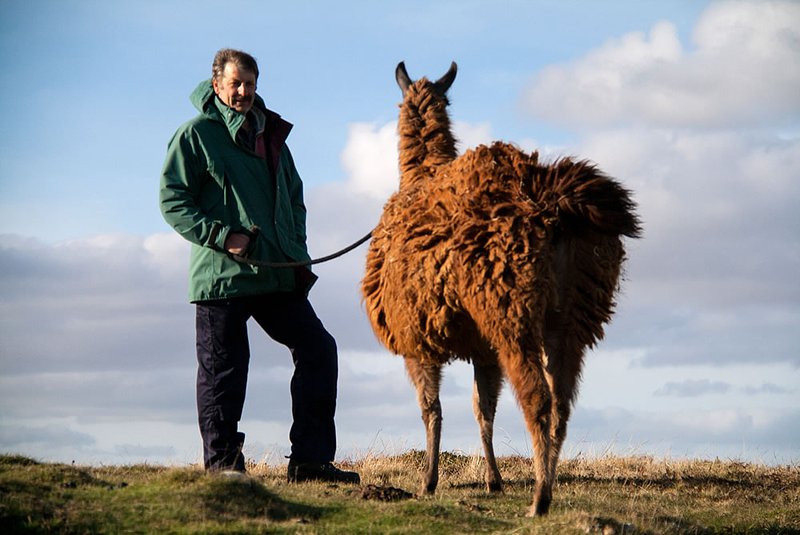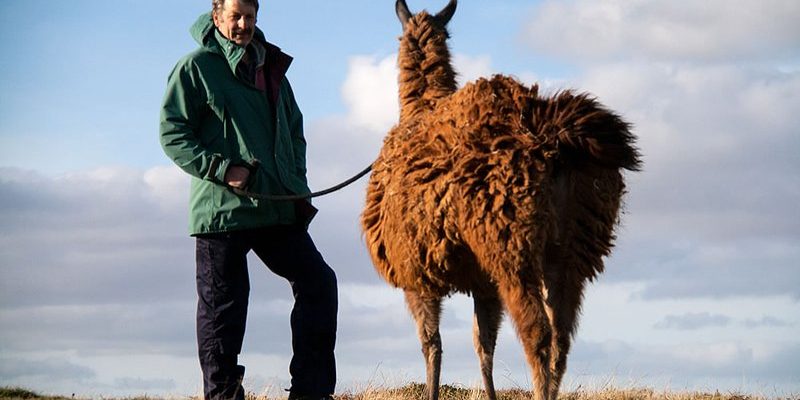
In this guide, we’ll cover everything from understanding your llama’s nature to practical training tips. Whether you’re planning to take your llama to shows, use them as therapy animals, or just want a fun companion on walks, this training will help you connect and build trust. So let’s get started!
Understanding Llamas and Their Behavior
Before you even think about putting a lead on your llama, it’s important to understand a bit about their behavior. Llamas are social creatures, often happiest in the company of their herd. Think of them as the introverts of the animal kingdom—while they can be friendly, they also appreciate their personal space.
Knowing this helps you develop a training style that respects their boundaries. Take your time, and be patient. Honestly, if you rush things, your llama might just decide standing still is the best option. That’s why starting with basic trust-building is crucial. Spend some time each day just hanging out with your llama, offering treats, and letting them get comfortable with your presence.
Moreover, llamas can react to their environment in surprising ways. Loud noises or unexpected movements might startle them. So, creating a calm, quiet space for training will make both you and your llama feel more at ease.
Choosing the Right Equipment
When training a llama, the right equipment can make all the difference. You’ll need a proper lead rope and a halter that fits your llama well. Let’s break it down:
- Halter: Choose a halter that is comfortable and doesn’t rub against your llama. A nylon halter is a good choice as it’s lightweight and easy to clean. Make sure it fits snugly but is not too tight.
- Lead Rope: Select a lead rope that is about 10 feet long. This gives your llama space to move but still keeps you in control. Look for one that has a sturdy clip to attach to the halter.
- Treats: Positive reinforcement is key in training. Use treats like small pieces of fruit or veggies that your llama enjoys. This can significantly help during training sessions.
With the right gear in hand, you’ll be ready to start building a bond with your llama. Remember, choosing the right tools is like picking the right shoes for a dance—you want them to fit just right so you can move smoothly.
Building Trust with Your Llama
Starting off on the right foot—or hoof, in this case—is all about building trust. This step can’t be rushed; it’s essential for a successful training experience. Spend time with your llama in a safe, enclosed space where they feel secure.
You might be wondering how to start. Here’s a simple routine:
- Greet Your Llama: Approach your llama softly, using a calm voice. Allow them to smell you, which helps them recognize you.
- Offer Treats: Use treats to create a positive association with you. Gradually show them the lead rope while giving them a tiny snack.
- Gentle Touches: Gently pet and scratch your llama, focusing on areas they enjoy. This gesture reassures them and builds comfort.
As you continue to interact, your llama will start to see you as a friend, not just another human. Trust is the foundation for everything else you’ll do together.
Introducing the Lead and Halter
Now that you’ve built a bit of trust, it’s time to introduce the lead and halter. This part can be tricky, so take it slow. Start by letting your llama sniff the halter. Just like you’d show a dog a new toy, this introduction helps them understand what’s coming.
Once they’re comfortable with the halter, you can gently place it on their head. Be sure to praise your llama during this process—use a soft voice and maybe another treat to keep things positive. After a few sessions, they’ll start to recognize the halter as part of their routine.
So, what’s next? Once the halter is secure, attach the lead rope. Don’t tug or pull; instead, let your llama walk around at their own pace. You can guide them gently with the lead but remember, they might not be used to this yet. Patience is key!
First Steps on the Lead
Here comes the exciting part: taking those first steps on the lead! Start in a familiar, quiet space where both you and your llama feel relaxed. Take a few steps away from them and gently encourage them to follow. You can use treats to entice them; just make sure they see the treat as a reward for following you.
If your llama seems hesitant, stop and give them time to adjust. You might find that they’re more interested in looking around than actually moving forward. That’s perfectly okay! Just be consistent and encourage them with a calm voice.
Sometimes, llamas can be stubborn and might just want to stand still. If this happens, don’t worry. Simply waiting until they feel ready to move is part of the process. Celebrate each small success, and soon enough, those first steps will turn into a full stroll!
Practice Makes Perfect
Training is all about practice. Set aside regular time in your schedule to work with your llama on the lead. Keep each session short and sweet; around 10-15 minutes is often the sweet spot. This ensures your llama doesn’t get bored or overwhelmed.
During these practice sessions, gradually increase the distance you walk together. Start with just a few feet, and as they get the hang of it, you can work up to longer walks. If your llama walks ahead, gently guide them back to your side. With time, they’ll learn the ropes—pun intended!
You can also introduce simple commands like “walk” or “stop.” Consistency is key. When you say the command while guiding them, they’ll start to associate the word with the action. Over time, your llama will understand and respond to your cues, making your walks even more enjoyable.
Addressing Common Challenges
Training a llama isn’t always smooth sailing. You might face some common challenges, and that’s completely normal. Here are a few problems you could encounter and how to tackle them:
- Refusing to Move: If your llama stands still, don’t force them. Instead, try using treats or resting by their side until they feel comfortable to walk.
- Pulling on the Lead: If your llama pulls ahead, stop walking until they return to your side. This teaches them that pulling gets them nowhere.
- Getting Spooked: Llamas can be jumpy with loud noises or sudden movements. Practice in a calm environment and gradually introduce them to new sounds.
Remember, every llama is an individual. Patience, understanding, and a bit of humor go a long way. Training can have its ups and downs, but with consistent effort, you’ll find your rhythm together.
Enjoying Your Walks Together
Once your llama is walking on a lead and moving confidently beside you, it’s time to enjoy those walks! Think of it as a bonding experience; it’s not just about getting from point A to B, but about spending quality time together.
Consider exploring different environments. Whether it’s a local park, a quiet trail, or just your backyard, new sights and smells can be exciting for both of you. Just make sure the area is safe for your fluffy friend.
As you walk, keep rewarding your llama with treats and petting. This reinforces the positive experience and might even make them look forward to your walks. And who knows? You might find yourself wanting to take longer strolls!
Training your llama to walk on a lead isn’t just about the destination; it’s about the journey you take together. With love, patience, and practice, you’ll develop a strong bond that turns every walk into a cherished moment.
In conclusion, remember that training takes time, and every llama is different. Embrace the process, and you’ll end up with a loving, well-trained companion by your side. Happy walking!

